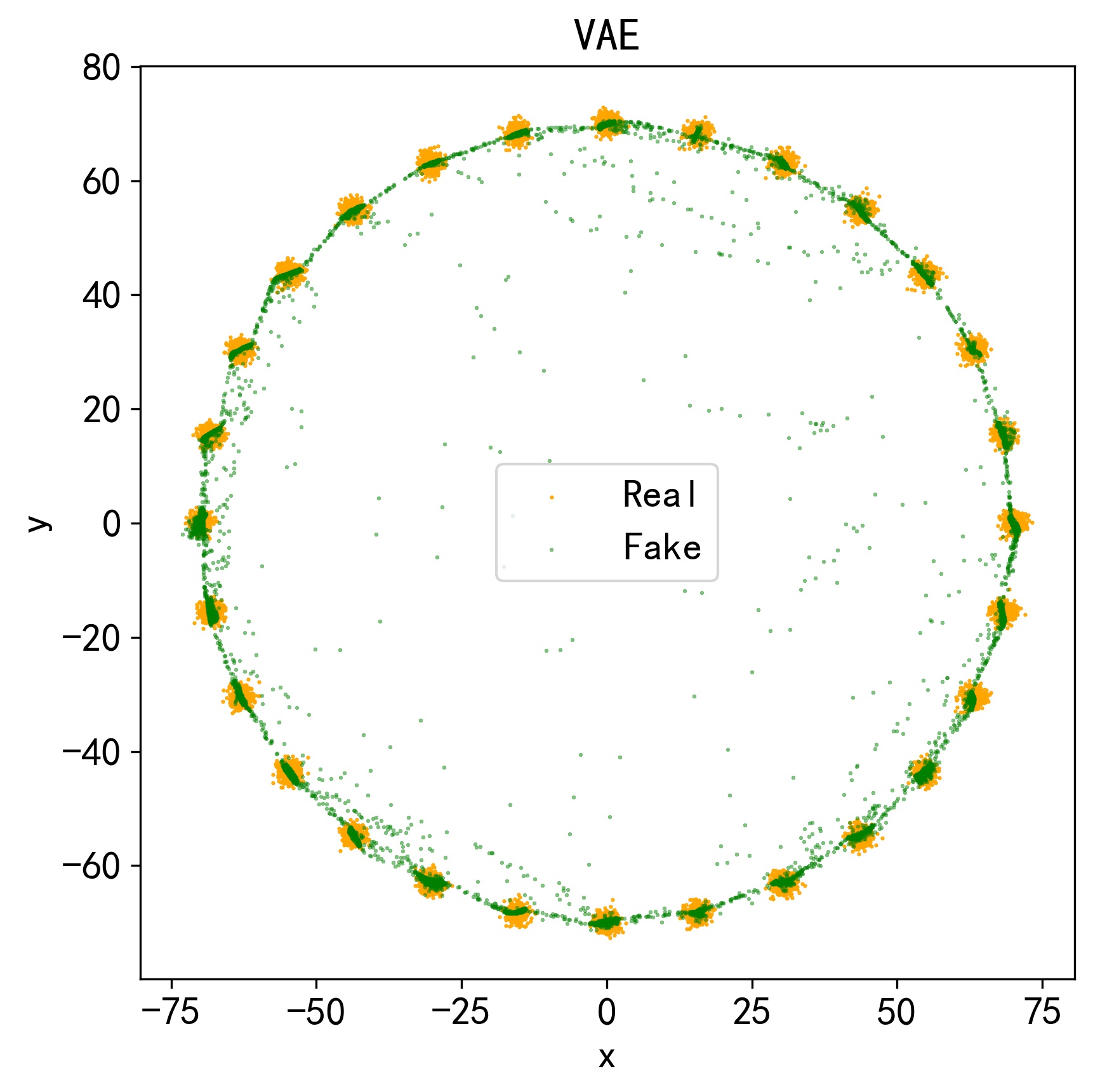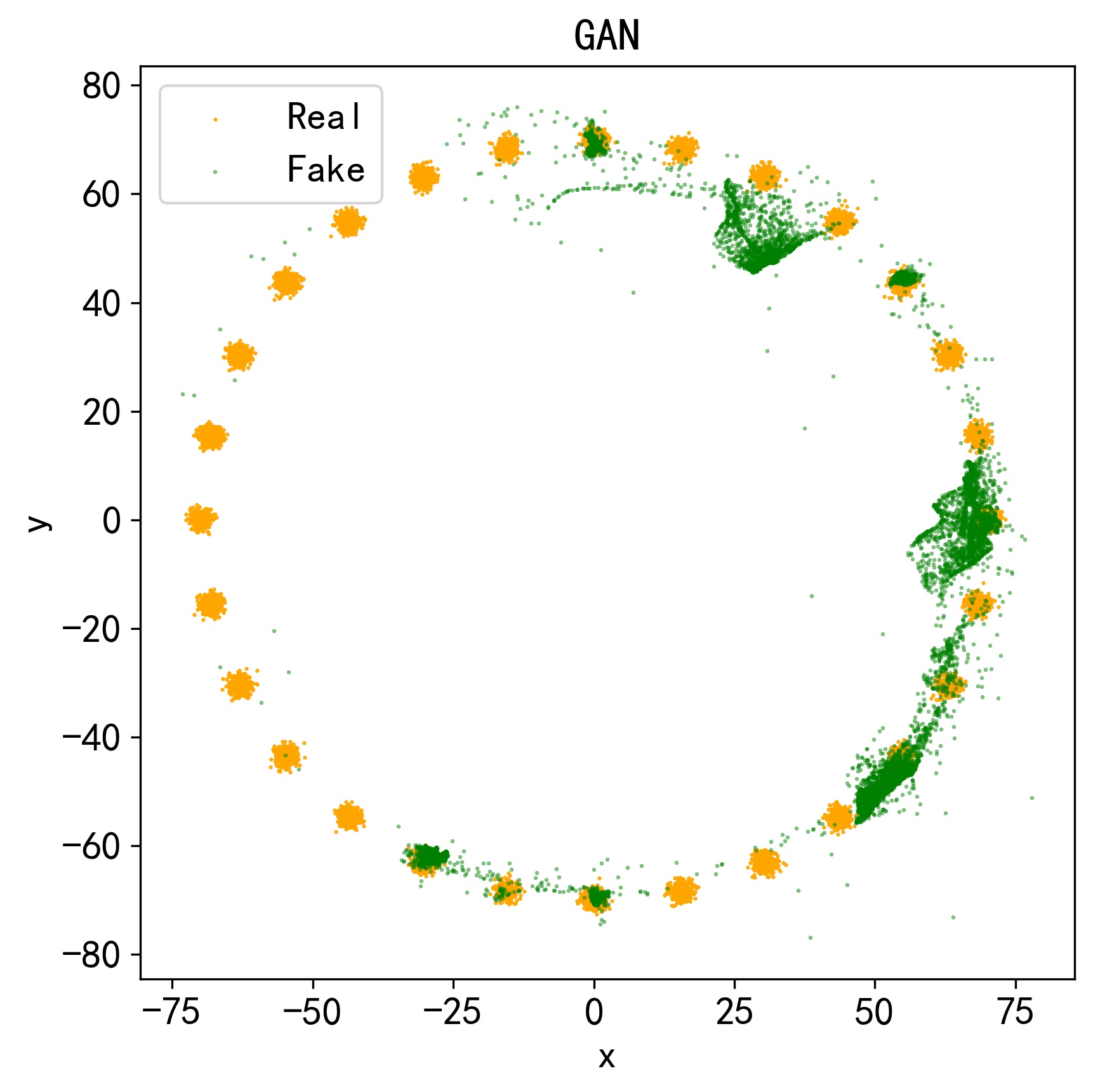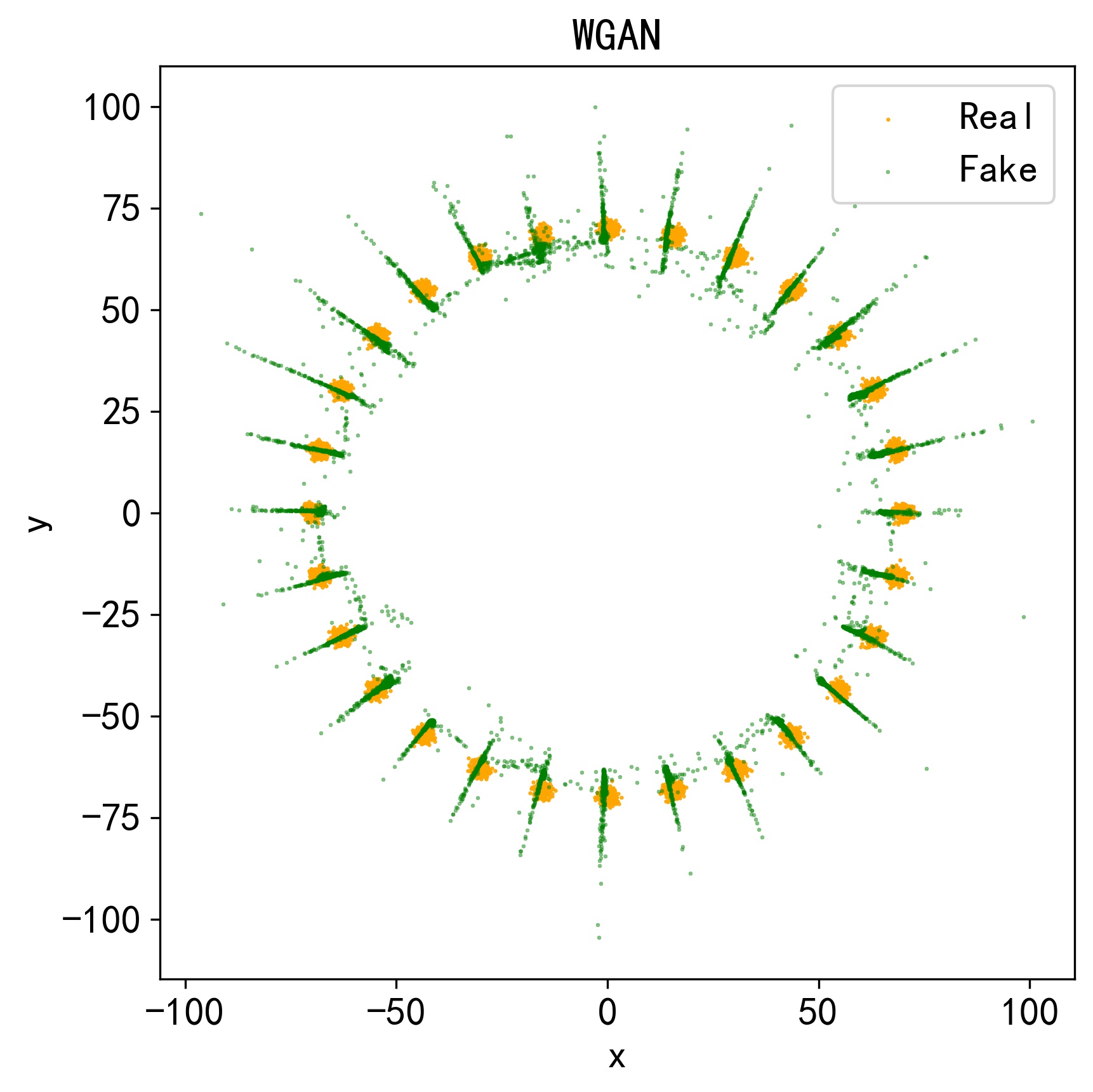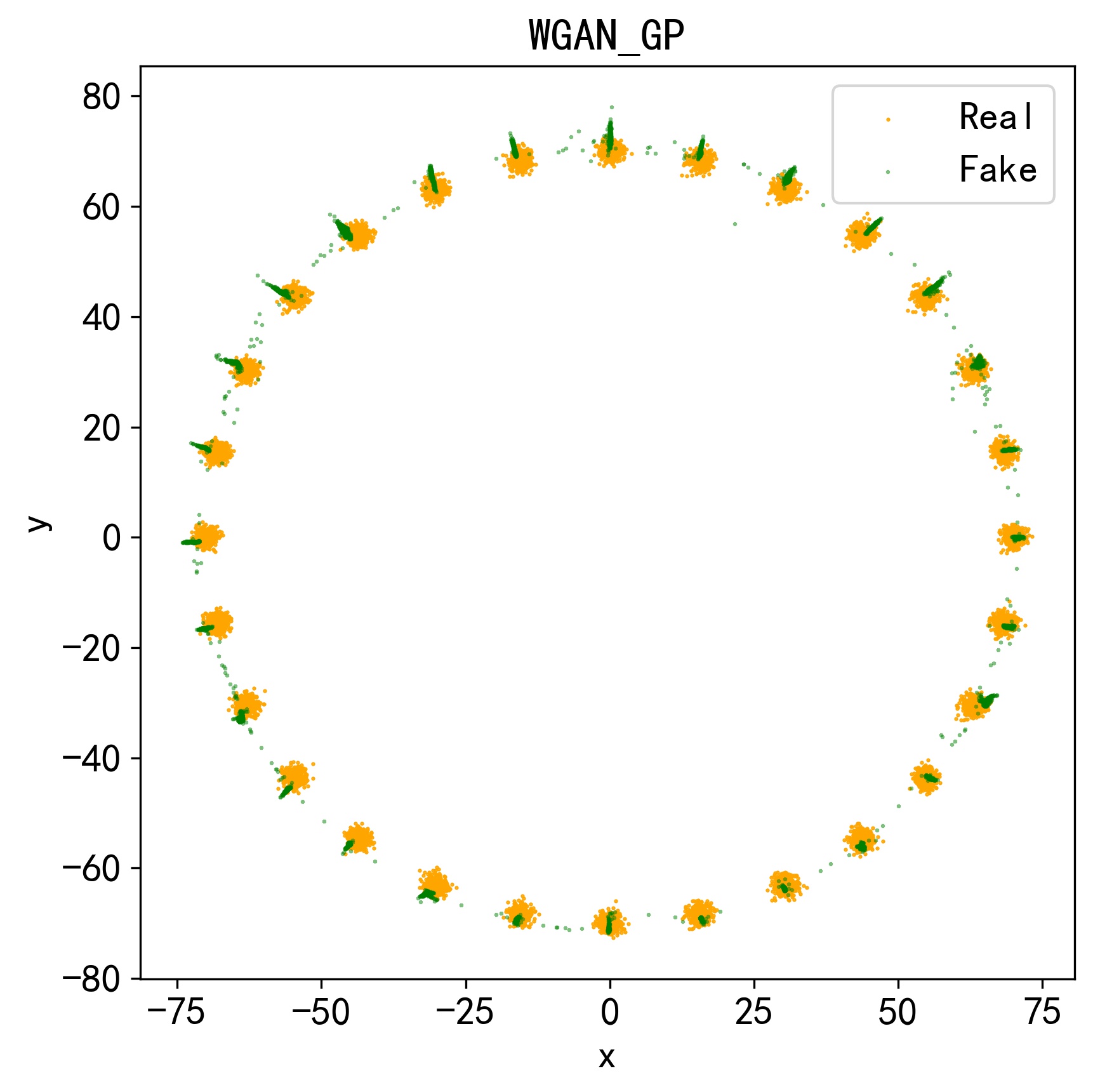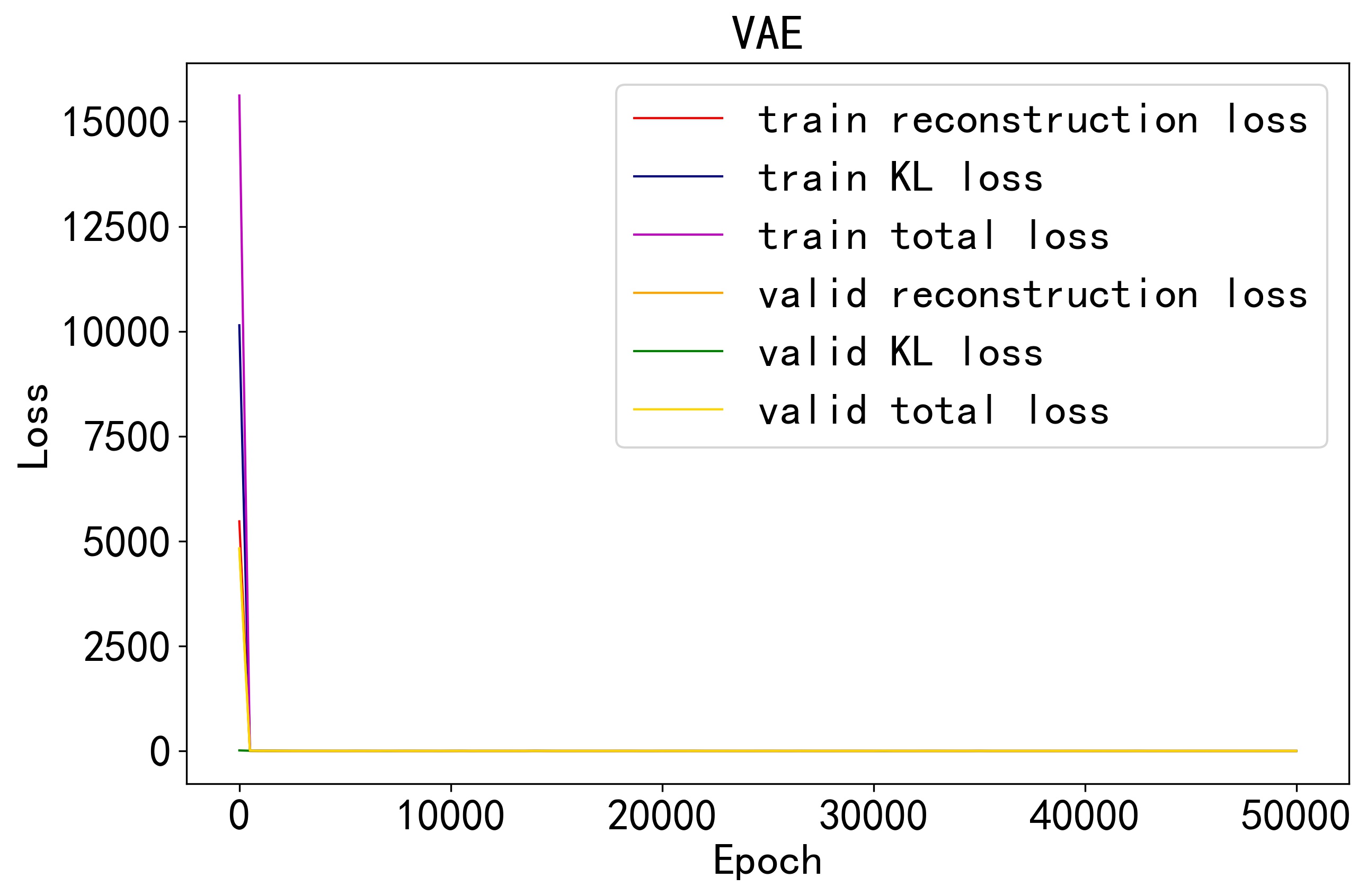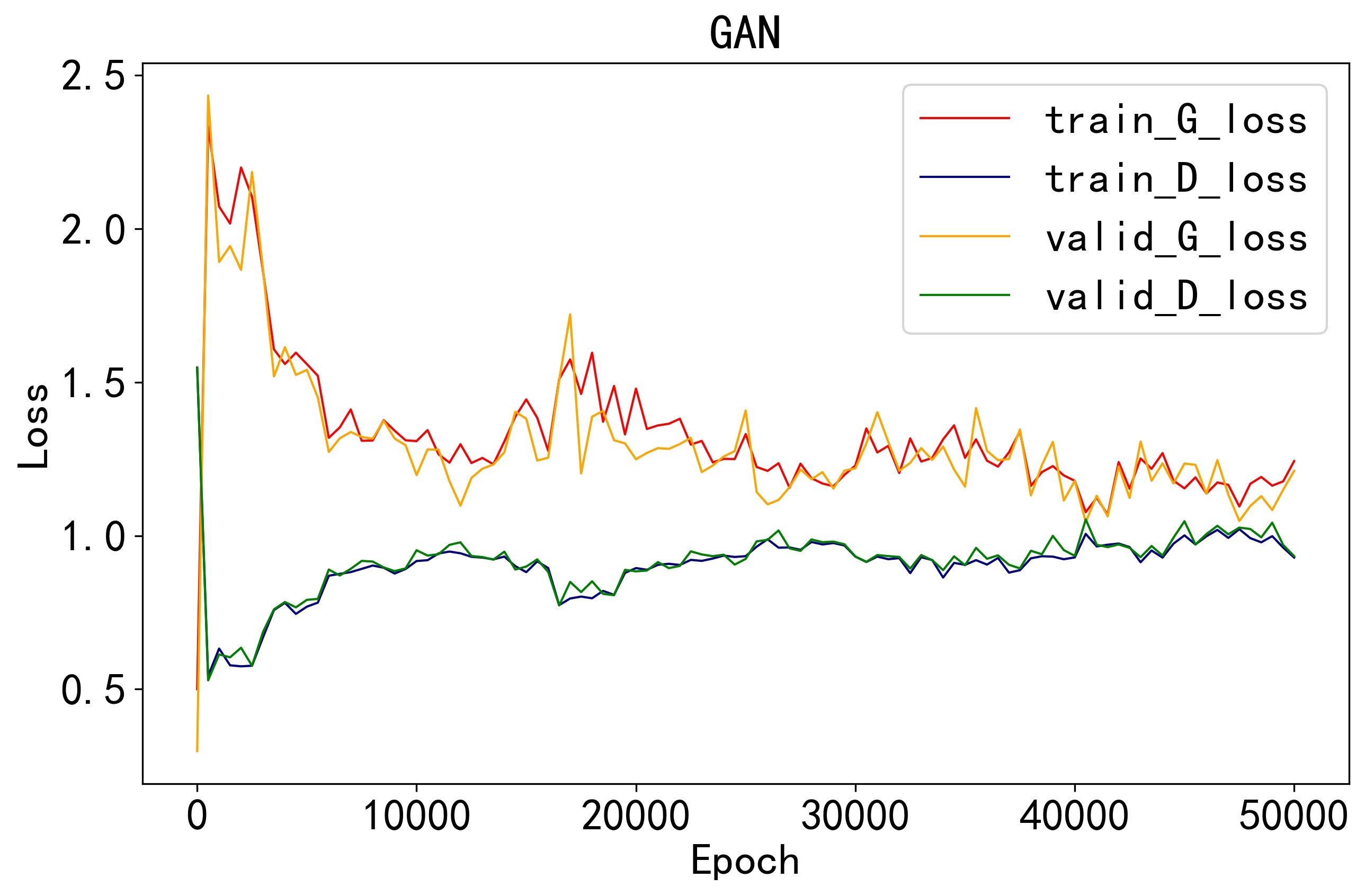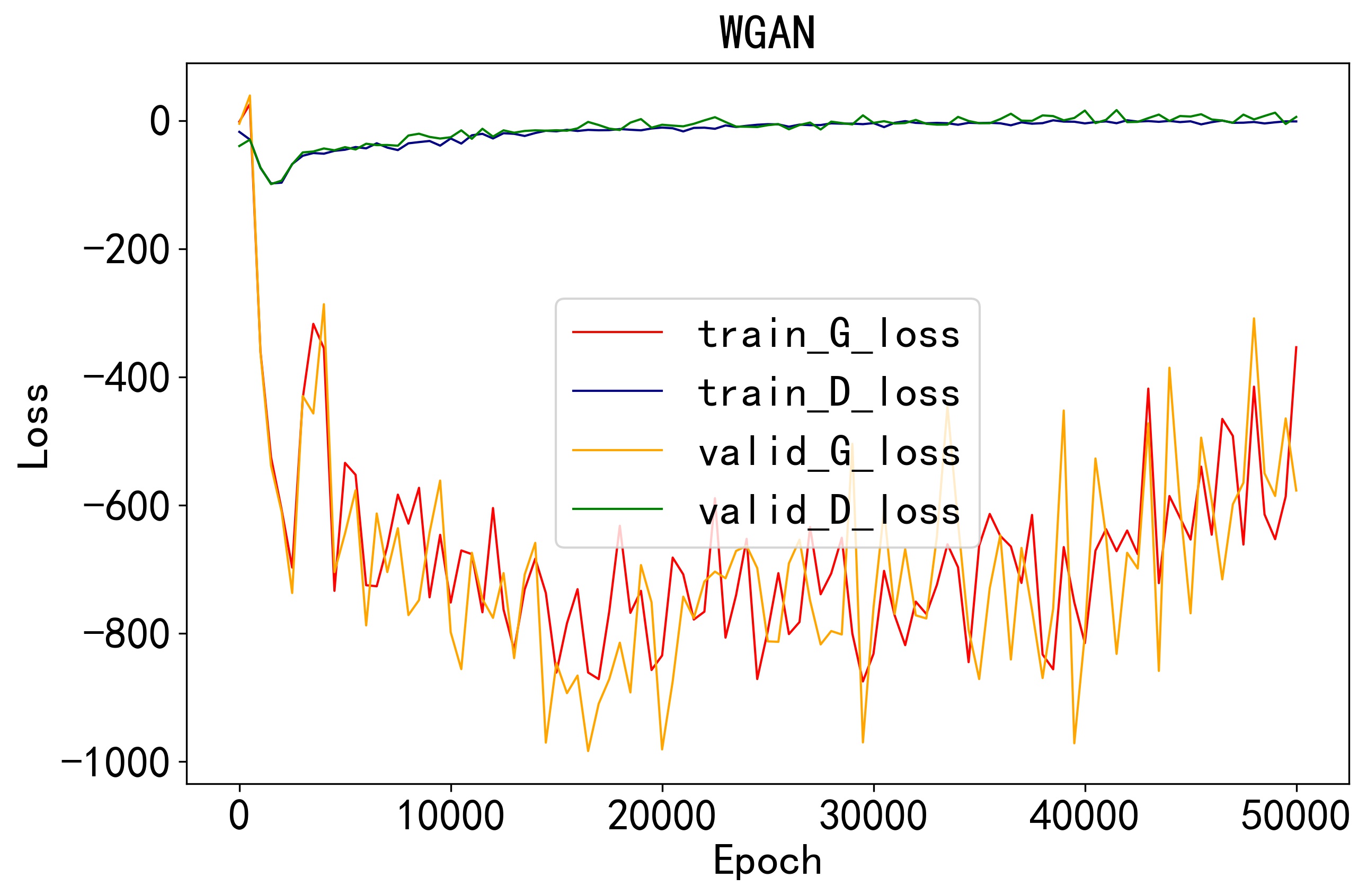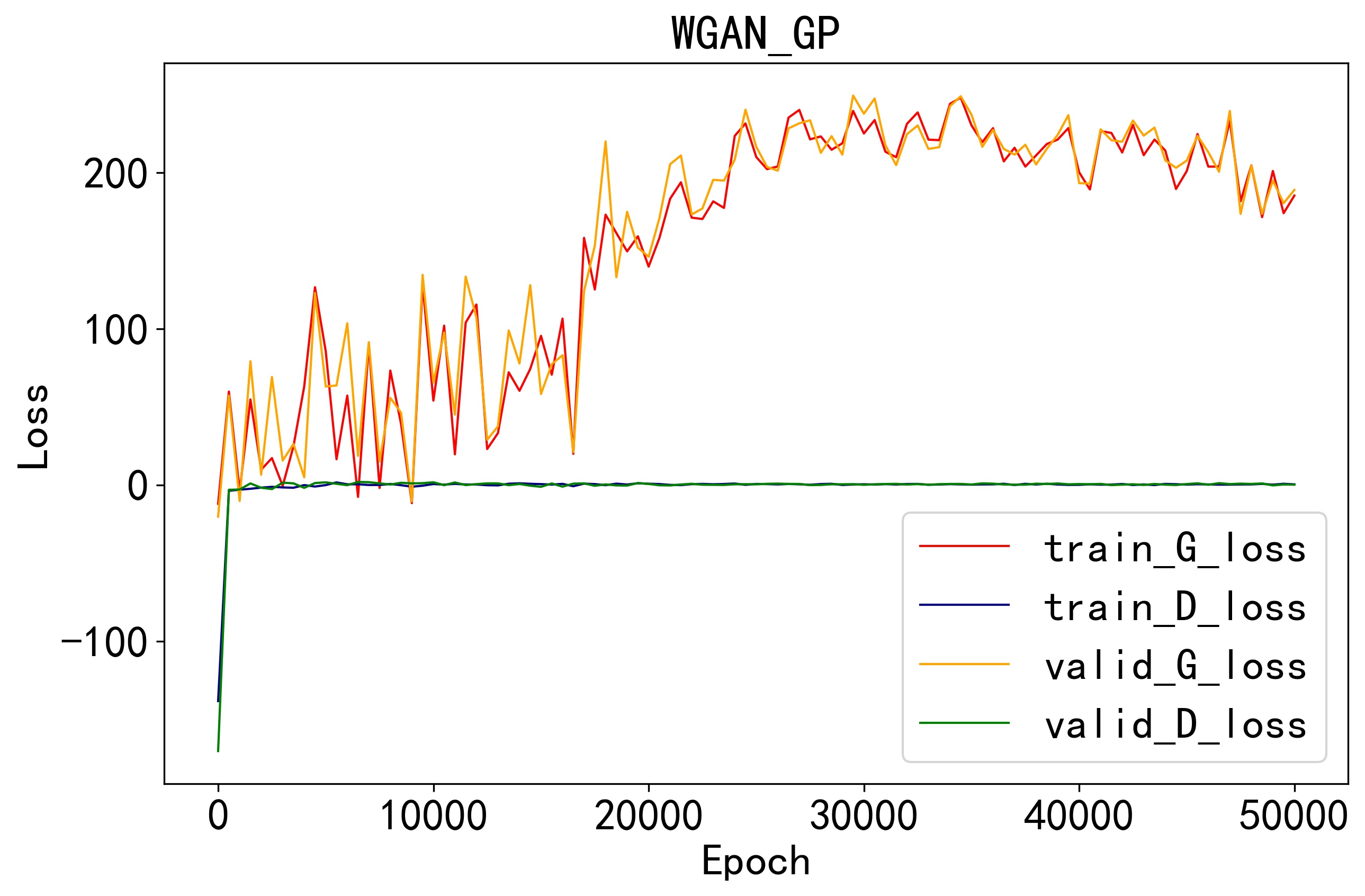In this project, we implemented VAE, GAN, WGAN, WGAN-GP on two synthetic datasets with Pytorch.
The following shows basic folder structure.
├── fig # figures
├── data
│ ├── circle_1 # circle_1 data
│ ├── circle_1 # circle_1 data
│ └── generate_data.ipynb # generate synthetic dataset
├── code
│ ├── model # include GAN.py VAE.py WGAN.py WGAN_GP.py
│ ├── main_vae.py # gateway for VAE
│ ├── ...
│ ├── ...
│ ├── main_wgan_gp.py # gateway for WGAN_GP
│ └── utils.py # utils
├── ckpt # model checkpoints to be saved here
├── result # generation sample results and loss to be saved here
└── log # training log to be saved here
-
Circle 1: This dataset consists of 28 components, where each component is isotropic and generated from a mixture of 2-dimensional standard normal Gaussian. The 28 components are uniformly distributed on a circle (radius=70).
-
Circle 2: Similar to Circle 1 dataset, Circle 2 dataset also consists of 28 isotropic standard normal Gaussian components. Differently, the 28 components are uniformly distributed over 2 circles, 8 components on the small circle (radius=25) and 20 components on the large circle (radius=50).
For a easy way to reproduce any results in this project, you can run the command as follows.
sh run.sh
To run the model on a different dataset, or with different hyper-parameters, etc, simply modify the config in the main_*.py file.
